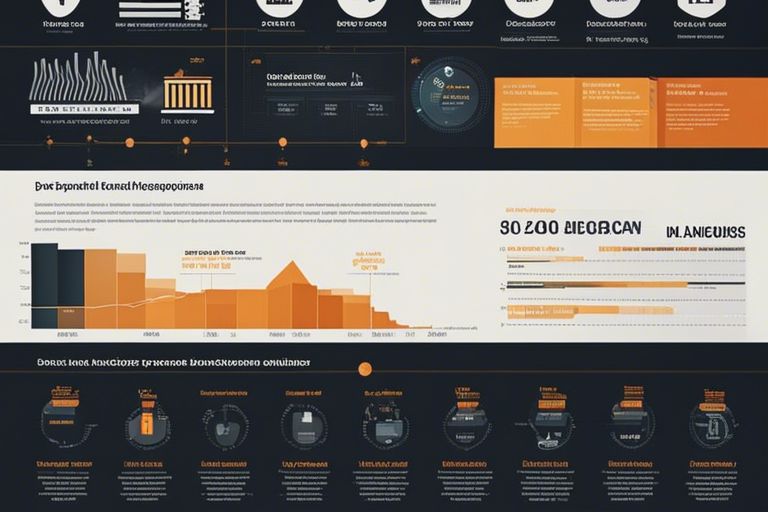Just beneath the surface of maps lies a treasure trove of information crucial for various industries – land grid data. Understanding this complex but vital dataset is key to unlocking a wealth of insights for urban planning, resource management, and more. In this blog post, we explore the intricate world of land grid data, decoding its significance and shedding light on why it is indispensable for informed decision-making in today’s data-driven world.
Fundamentals of Land Grid Data
Definition and Types of Land Grid Data
With land grid data being a fundamental aspect of mapping and analyzing geographic information, it is important to understand its definition and types. Land grid data refers to a digital representation of land parcels, boundaries, and features in a grid format, facilitating precise location identification and analysis. There are several types of land grid data, including cadastral maps, parcel data, topographic maps, and zoning maps. Each type serves a specific purpose, ranging from land ownership information to terrain characteristics and land use regulations.
| Cadastral Maps | Display land parcel boundaries and ownership information |
| Parcel Data | Contains detailed information about individual land parcels |
| Topographic Maps | Depict terrain features like elevation, contours, and slope |
| Zoning Maps | Show land use regulations and restrictions in specific areas |
| Other | Additional data layers like transportation networks and hydrology |
Any analysis or decision-making process related to land utilization, development, or conservation relies heavily on the accuracy and comprehensiveness of land grid data.
Components and Structure
Types of land grid data form the components of a comprehensive dataset important for various applications. Plus, the structure of land grid data involves organizing information into layers such as boundaries, attributes, and spatial relationships. This structured approach enables users to query, visualize, and analyze data effectively, fostering informed decision-making processes.
Applications of Land Grid Data
Land Management and Planning
Applications of Land Grid data in land management and planning are extensive. It provides valuable insights into parcel boundaries, ownership information, land use classifications, and zoning regulations. This data is crucial for urban planning, infrastructure development, and conservation initiatives. By utilizing land grid data, officials can make informed decisions to ensure sustainable land use and development.
Resource Exploration and Environmental Studies
On the other hand, land grid data plays a vital role in resource exploration and environmental studies. It aids in identifying potential sites for natural resource extraction such as mining or drilling. Furthermore, environmental impact assessments rely on this data to analyze land features and their impact on ecosystems. By leveraging land grid data, researchers can better understand the environment and make informed decisions regarding resource management and conservation.
Understanding the spatial relationships of land features is important for resource exploration and environmental studies. Land grid data allows researchers to map out areas of interest, study the geographic distribution of resources, and assess the impact of human activities on the environment. By integrating various datasets such as topography, soil composition, and vegetation coverage, a comprehensive analysis can be conducted to support sustainable resource management practices.
Analyzing and Interpreting Land Grid Data
Tools and Technologies for Analysis
With the advancements in technology, analyzing land grid data has become more efficient and accurate. Geographic Information Systems (GIS) software, remote sensing technologies, and Big Data analytics tools are commonly used in the analysis of land grid data. These tools help in visualizing, identifying patterns, and making informed decisions based on the data.
Challenges and Best Practices
Data quality, standardization, and integration are some of the key challenges faced when analyzing land grid data. Best practices include ensuring data accuracy, maintaining data consistency, and establishing clear data governance protocols. Collaborating with experts in the field and regularly updating datasets are important for overcoming these challenges.
Land grid data poses unique challenges due to the diverse sources, formats, and scales at which the data is collected. Additionally, ensuring data privacy and security while sharing and analyzing land grid data requires careful attention to compliance with regulations and industry standards.
The Future of Land Grid Data
Emerging Trends in Data Collection and Usage
An increasing number of industries are relying on cutting-edge technologies like aerial drones and artificial intelligence for faster, more accurate data collection. These innovative approaches are revolutionizing the way land grid data is gathered and processed, leading to more efficient decision-making processes for various sectors.
The Role of Land Grid Data in Sustainable Development
One critical aspect of land grid data is its contribution to sustainable development efforts. By providing detailed information on land use, natural resources, and environmental factors, land grid data plays a pivotal role in guiding development projects that align with environmental conservation goals and promote the long-term well-being of communities.
Land grid data can assist urban planners in designing cities that optimize green spaces, reduce carbon emissions, and enhance overall quality of life for residents. It also supports initiatives for responsible land management and biodiversity conservation, helping ensure a more sustainable future for generations to come.

Summing up
Understanding land grid data is necessary for various industries such as real estate, urban planning, and energy exploration. By cracking the code of this complex data, businesses can make informed decisions, optimize their operations, and minimize risks. With the rise of digital mapping technologies and advanced data analytics tools, harnessing the power of land grid data has never been more achievable. By unlocking valuable insights from this information-rich resource, organizations can gain a competitive edge and drive growth in a rapidly evolving market landscape.

